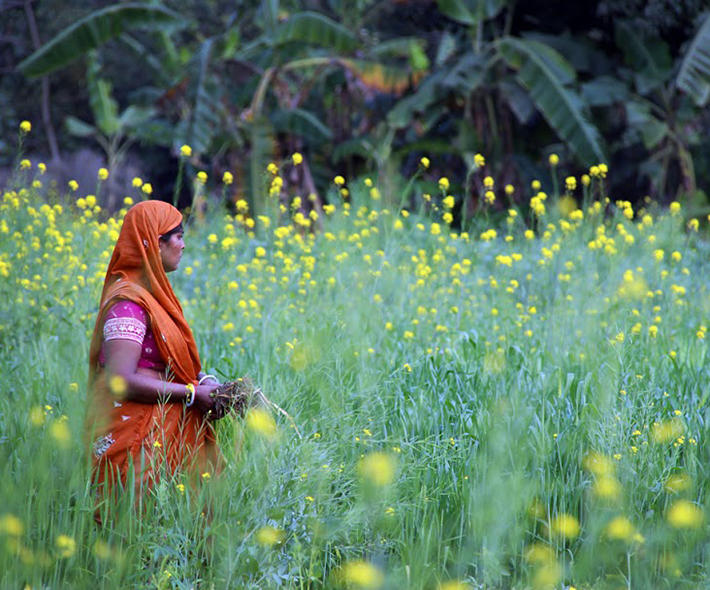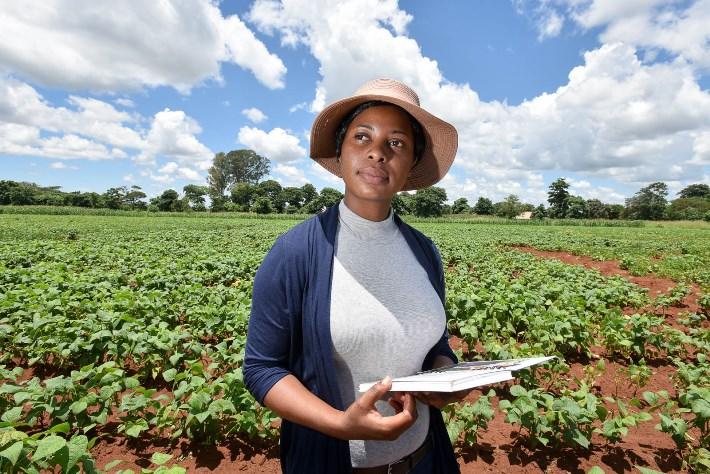Blog Biodiversity: a building block for a healthier future

On the International Day for Biological Diversity, we discuss how biodiversity can be leveraged to embed resilience in our food systems and build a healthy future.

The air we breathe, the food we eat and the water we drink rely on biodiversity, the foundation of healthy ecosystems. There is an intimate bond linking biological diversity, food and planetary health. The meal on our plate depends on fresh water availability and healthy soils that supply essential nutrients to plants, which in turn make up 80% of the food we eat and produce 98% of the oxygen we breathe. Without plants there would be no beneficial soil organisms that reduce the risk of pests. All these pieces interact in a fine equilibrium called an ecosystem, shaped by millions of years of evolution.
Now more than ever, while the COVID-19 pandemic unfolds, it is evident that we are still completely dependent on our natural ecosystems, despite all our technological advances. This means that, to thrive in the future and to recover from the impacts of COVID-19 in the short-term, we need to ensure the conservation and sustainable use of biodiversity and its many linkages to societal needs, including the food we eat. And yet, our precious biodiversity is in decline, with 1 million animal and plant species threatened with extinction, more than ever before in human history.
The slogan of this year’s International Day for Biological Diversity, “Our solutions are in nature,” stresses the importance of working together at all levels to build a healthy and sustainable future, in harmony with nature.
Time for a rethink
Agriculture is the number one driver of environmental degradation and biodiversity loss and, at the same time, is not providing enough diverse and nutritious foods. More than a third of the world’s land surface and nearly 75% of freshwater resources are currently devoted to crop or livestock production. Globally, dietary habits are becoming more similar to each other, relying on a few major cereal crops such as rice, wheat and maize, as well as sugar and oil. Poor diets are the primary cause of disease and death globally.

As a result of this homogenization, thousands of cultivated and wild food plants are no longer used, despite their nutritional value. Losing this variety of plants is not only a nutritional issue. It also undermines resilience of our food systems to pests, diseases and climate change, as genetic diversity is critical to maintain ecosystem stability and support long-term resilience of our production systems to different shocks. In turn, this is essential to alleviate poverty and ensure food security in a sustainable way.
The way we produce and consume our food is clearly hurting both people and the planet. It is time for a rethink. Fortunately, agriculture can become part of the solution and biodiversity can be leveraged to embed resilience in our food systems.

COVID-19 is exposing the flaws of our current food systems and is forcing us to reflect on the changes we need to make to achieve a food system that adequately nourishes people and sustains the planet.
In this context, 2020 can be a year of reflection and challenges turned into opportunities. The discussions around the Post-2020 Global Biodiversity Framework offer the occasion for all of us to join forces toward sustainable and resilient food systems that benefit people and the planet, through increased use and conservation of biodiversity.
Measure
Agricultural biodiversity – the wealth of plants, animals and microorganisms used for food and agriculture – is often left out from dietary guidelines, agricultural and environmental policies, business strategies and global monitoring efforts. Improving access to sound data and knowledge about the state of agrobiodiversity across the world can trigger behavior change and help reintroduce agrobiodiversity in our food systems.
An important step towards enabling policy frameworks is represented by the Agrobiodiversity Index, the first tool that provides policymakers, companies and investors with a common standard to measure agrobiodiversity in diets, production and genetic resources, in order to design concrete strategies to use it sustainably.
Protect
To start bending the curve of biodiversity loss we need to improve efforts to safeguard crop genetic diversity. This means, for instance, making sure that enough funds are available to sustain genebanks around the world. The Alliance of Bioversity International and CIAT manages genebanks in Colombia and Belgium, safeguarding plants from 150 nations to preserve agricultural and tree biodiversity for future generations. The genebanks are an important back-up in case of extreme natural events and emergency situations such as the COVID-19 pandemic.
The Alliance has also a decades-long experience in promoting on-farm conservation and conservation in the wild. Much of our food biodiversity is maintained by small-scale food producers, including indigenous communities, often through agroecological practices. The varieties that smallholders produce are well adapted to local climate and soil conditions. The Alliance adopts novel approaches such as citizen science to leverage this traditional knowledge and help communities rediscover the potential of local, neglected and underutilized crops.

Use
All regions and food cultures have their own nutritionally rich species that are currently being neglected or underutilized and that can be brought back to the plate to increase food security, nutrition and resilience of agriculture. Tens of thousands of alternative crops can substitute and complement the three crops – rice, wheat and maize – that currently provide more than 50% of global plant-derived calories. Sorghum, millets and quinoa are examples of cereals that can grow in difficult environments, have high nutrient content and have the potential to increase their yields. Using this precious diversity is the best way to preserve it – as the seeds are shared and multiplied.
Yet, many farmers do not have enough incentives to adopt this approach as they are driven by market demand for more common high-yielding crop varieties. In addition, seed laws and genetic resource policies, in an effort to guarantee good quality seed, have sometimes brought in legislations that inhibit how farmers can exchange and sell their varieties. To address these issues, the Alliance works with several countries, from Guatemala to Kenya and Sri Lanka, to mainstream biodiversity into agricultural policies, mapping and incorporating traditional knowledge into national dietary guidelines while increasing consumers’ awareness on the benefits of diverse foods.
Ultimately, it is important that we recognize that it is on all of us to protect and use our biodiversity. “We all have a role to play,” says Juan Lucas Restrepo, Alliance Director General. “From governments to companies and consumers, together we can reverse current trends by making more conscious food choices and transforming agriculture and food systems. This includes shifting to more diverse and nutrition diets accessible for all, reducing food waste and adopting nature-based solutions in agriculture.”

Farmers threshing quinoa in Bolivia. All regions and food cultures have their own nutritionally-rich species that, despite being currently underutilized, can increase food security, nutrition and resilience. Credit: Bioversity International/A. Camacho
Relevant resources
- Including food systems, biodiversity, nutrition and dietary health in the zero draft of the Post-2020 Global Biodiversity Framework
- Agrobiodiversity and feeding the world: more of the same will result in more of the same
- A road map for conservation, use, and public engagement around North America’s crop wild relatives and wild utilized plants
- Can crop diversity strengthen small-scale farmers’ resilience? In: Agrobiodiversity Index report 2019: risk and resilience
- Report from the banana collecting mission to Samoa from July 22nd to August 2nd, 2019
- Report from the banana collecting mission to Rarotonga and Aitutaki, Cook Islands
- Report from the banana collecting mission to the Province of West New Britain, Papua New Guinea from September 30th to October 12th, 2019
